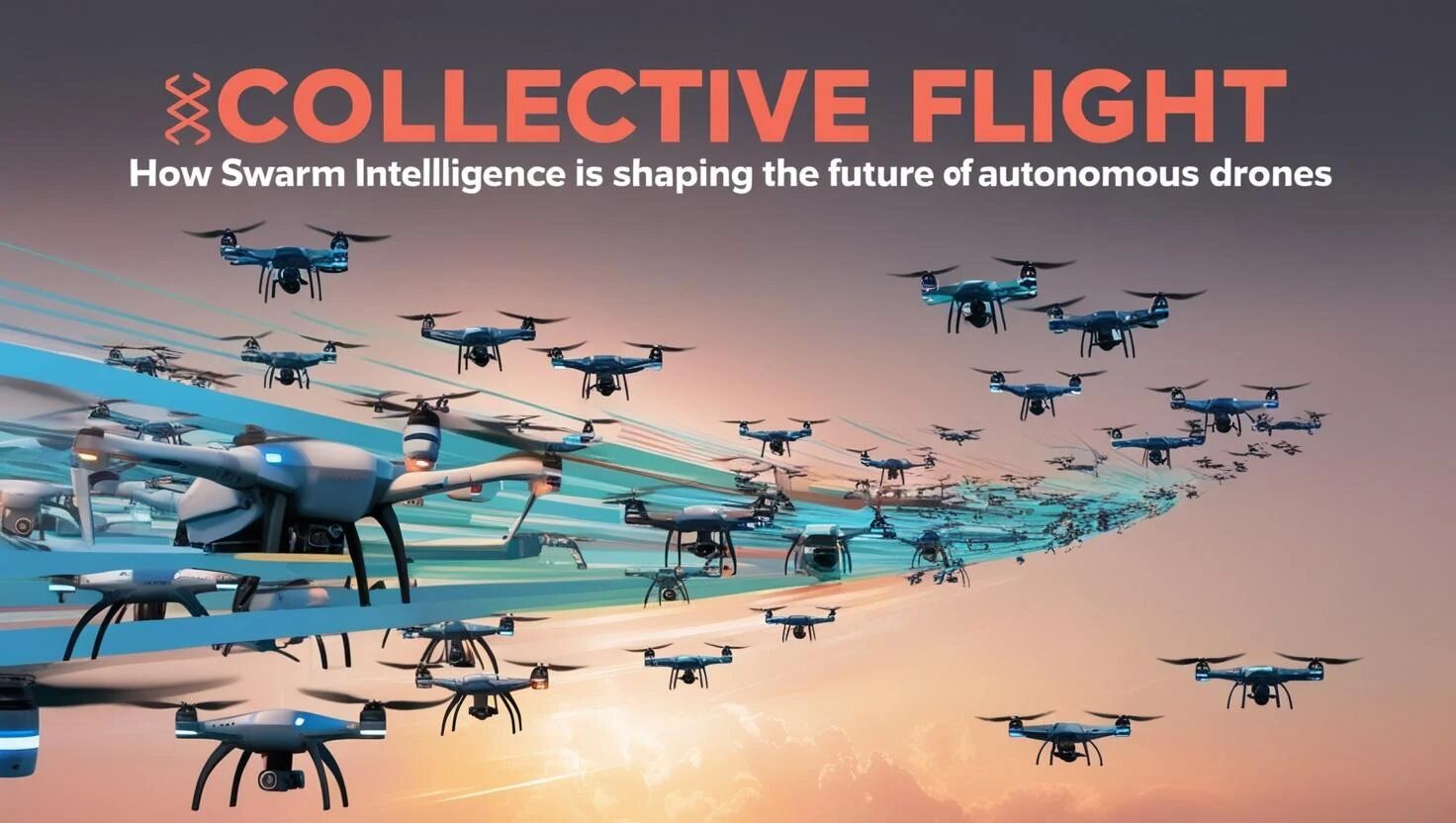In a world where drones are transforming industries, author Shruti Goel delves into an emerging paradigm that is redefining autonomous aerial operations: swarm intelligence. With a background in engineering and innovation, she explores how drones, inspired by nature’s collective behavior, are achieving remarkable coordination and adaptability through decentralized intelligence.
Nature’s Blueprint for Machines in the Sky
Swarm intelligence reimagines machine collaboration through decentralized, self-organized systems. Inspired by nature, drones follow simple local rules to achieve complex, adaptive group behavior, enhancing resilience and reducing the need for centralized control. This approach boosts scalability, fault tolerance, efficiency, and enables real-time decision-making in dynamic, unpredictable environments.
Vision Without Limits: Flocking with Eyes Wide Open
A major innovation in swarm tech is onboard visual systems that allow drones to autonomously flock without external infrastructure. These systems ensure formation stability in tough conditions like low light and strong winds. Vision-based algorithms enable lightweight processing, handling 20 frames per second per drone, even in swarms of over ten. This makes them highly effective in GPS-denied environments.
Smarter Conversations in the Sky
Effective communication is the backbone of any swarm system. Traditional broadcast networks are bandwidth-intensive and prone to failure as swarm sizes increase. Swarm-based drones adopt a hierarchical structure and local peer-to-peer messaging to reduce network traffic by over 70%. This translates to faster response times and fewer failures in high-interference environments. Even with 40% message loss, swarm drones continue functioning effectively a feat centralized systems can’t match.
Simple Rules, Complex Outcomes
Swarm intelligence stands out for its emergent behavior—complex actions arising from simple rules like collision avoidance, alignment, and cohesion. Drones can self-organize for tasks like synchronized movement and task reallocation without explicit programming. Bio-inspired algorithms, such as Ant Colony and Particle Swarm Optimization, enable real-time adaptation, energy efficiency, and optimal pathfinding.
Resilience in Chaos: Adapting to Change and Failure
Swarm drones are uniquely equipped to handle disruptions. Whether a drone malfunctions or environmental conditions shift, the system reorganizes itself instantly. Experiments show that swarms can retain up to 85% operational functionality even after losing nearly a third of their members. This robustness is critical for missions in disaster zones or contested territories, where predictability is a luxury.
Multiplying Impact Across Fields
Swarm intelligence is proving effective across various industries. In search and rescue, drone swarms significantly reduce search times and operate without GPS. They enable high-resolution environmental mapping, efficient reconnaissance, and cost-effective infrastructure inspection. In agriculture, swarms enhance detection of crop stress and irrigation needs. During disasters, they generate real-time maps to identify damage and improve relief efforts.
Building the Brain: Reinforcement Learning and Optimization
Beyond simple interactions, drones are learning machines. Reinforcement learning allows them to improve by experience, adapting to new challenges without being reprogrammed. Multi-agent learning ensures that the knowledge of one benefits the many, making the swarm collectively smarter. Compared to traditional controllers, these systems show up to 20% better performance in complex scenarios.
Scaling Intelligence, Not Just Numbers
Scalability is one of the most promising aspects of swarm intelligence. Adding drones to a mission doesn’t require system overhauls. Thanks to modular and scalable algorithms, communication and processing load increase slowly even as swarm size grows. Heterogeneous swarms where drones have different capabilities coordinate seamlessly, matching the right drone to the right task.
Facing the Future: Challenges on the Horizon
The field faces key challenges including bandwidth, latency, battery life, and security. Solutions like dynamic duty cycling, coordinated formations, and advanced consensus mechanisms are helping improve endurance and resilience against interference and hijacking.
In conclusion, Swarm intelligence is not just a scientific concept it’s a technological leap that transforms how drones operate, collaborate, and evolve. By harnessing principles from the natural world, drones are becoming self-reliant, adaptive, and scalable agents of change. From disaster relief to precision agriculture, the potential applications are vast and growing. As advancements continue to address existing limitations, these aerial collectives will push the boundaries of what’s possible in automation. Shruti Goel’s insights remind us that the future of flight lies not in isolated machines, but in the synergy of many.





























